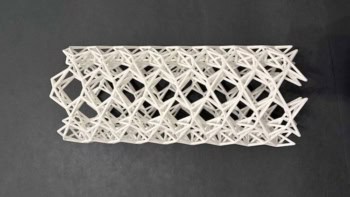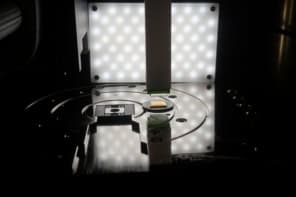NB: The publication on which this article is based has been retracted by its authors. The retraction followed an investigation into scientific misconduct by J Hendrik Schön. We are leaving this article here for archival purposes. Further information can be found at http://physicsweb.org/article/news/6/9/15
Most high-temperature superconductors have a similar basic structure, but the huge number of possible variations makes it difficult to study the mechanisms that give rise to superconductivity. Now Hendrik Schön and colleagues at Bell Labs in the US have devised an electrical method in which a simple copper-oxide superconductor mimics its more complex relations. The new approach could shed light on the behaviour of a whole range of high-temperature superconductors (J Schön et al 2001 Nature 414 434).
Most high-temperature superconductors consist of layers of copper oxide separated by various combinations of metal atoms. Layers of copper oxide alone would make an insulator, but the metal atoms add charge carriers – electrons or positive holes – to the compound, and below a certain temperature it loses its resistance to electrical current.
The current in a superconductor is made up of pairs of charge carriers, but the nature of the pairing mechanism in the copper-oxide superconductors remains a mystery.
To better understand this process, physicists need to study the effects of different concentrations of charge carriers on the properties of each superconductor. But it is difficult to change the type or concentration of charge carriers without introducing defects to the material or distorting its structure.
Now Schön and colleagues have overcome this problem by adding an electrode to the simplest superconducting copper-oxide compound, calcium copper oxide, which is an insulator under normal conditions. The team adjusted the applied voltage to add charge carriers to the compound, which made the compound a superconductor – a positive voltage adds electrons and a negative voltage adds positive holes. The team found that they could control the concentration of the charge carriers, allowing them to adjust the exact superconducting properties of the compound.
Schön and co-workers measured the conductance of the calcium copper oxide over a range of temperatures, and for different carrier concentrations. The shapes of the profiles closely matched those of more complex copper-oxide superconductors, indicating that the technique reliably reproduces their properties.
“This enables us to tune the carrier concentration over a very wide range without causing disorder or structural changes”, Schön told PhysicsWeb. The technique could allow physicists to map the behaviour of all the copper-oxide superconductors. “This might give us more insight into the physics underlying high-temperature superconductivity”, says Schön.



